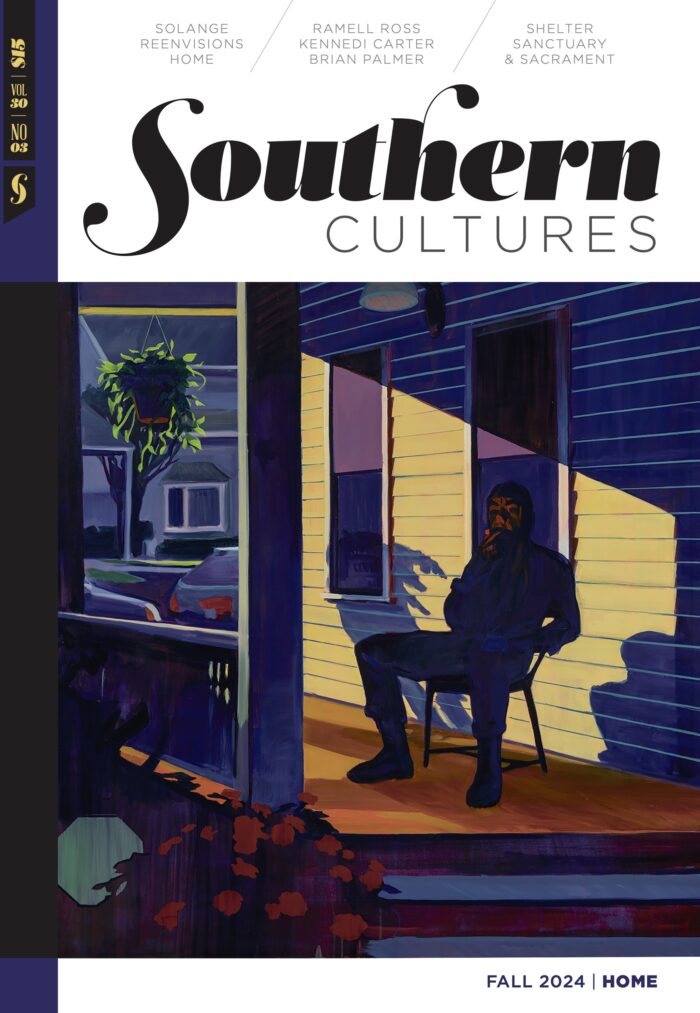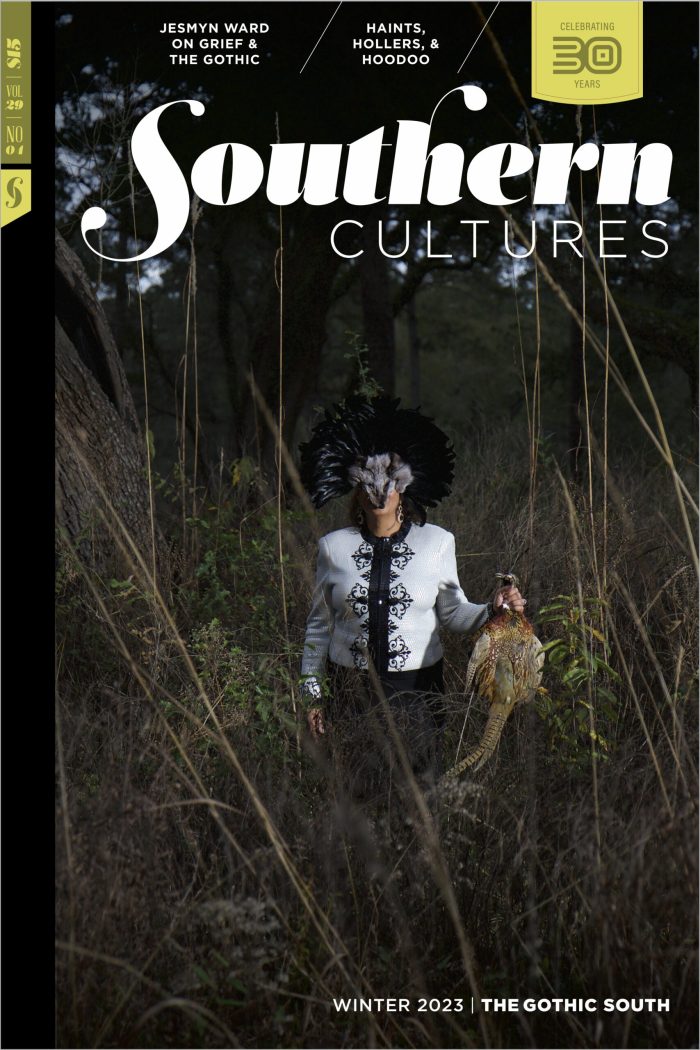by Kelly M. Bruce
“‘I just didn’t know that the slutty Catholic schoolgirl has been a staple of pornography for lo these many years! If only I had realized . . .'” Congratulations on another fine issue of Southern Cultures [Winter 2001]. I did not know what to expect from a publication featuring on its cover Britney Spears, bare midriff and »
by Harry L. Watson
It’s possible to argue that traditional southern identities were all invented by aggressive regional nostalgia. The very title of Gone with the Wind speaks volumes about its message. And think about “Dixie,” the once-more embattled marching song that has cheered Confederate soldiers, high school football teams, segregationist demonstrators, and lovers of rousing tunes generally. The singer »
by Stephen J. Whitfield
“‘Won’t-cha come with me to Alabammy, Back to the arms of my dear ol’ Mammy, Her cookin’s lousy and her hands are clammy, But what the hell, it’s home.'” To succeed in the New World, Jewish songwriters adopted a southern strategy. Immigrants or the sons of immigrants, these men found their vocation in the era »
by Trent Watts
“‘No normal person could resist the gregarious contagion of this congenial event where merchants and farmers, visiting celebrities and natives met and mingled.'” For more than one hundred years, Mississippians have braved their long hot summer to head to the eastern part of the state for the Neshoba County Fair. For one week in late »
Myths of the Southern Baseball Player
by Larry Powell
“‘Jackie took a lot of abuse, but there was no violence. Even if you count hard slides with raised spikes, that was nothing compared to what happened in the 1950s and ’60s during the Civil Rights movement.'” The year of 1947 was arguably the most pivotal in the history of major league baseball. Baseball historian »
by Thomas A. Tweed
Truisms are sometimes true. And if anything has seemed self-evident to interpreters of the South, it’s the religious homogeneity of the Bible Belt. With the exception of the Mormon cultural area in Utah and adjoining states, no U.S. region seems less diverse. Fervent revivalism, civil war, and minimal immigration allowed a southern evangelical Protestant establishment—mostly »
by Daniel Anderson
“She is AM radio. Chevrolet. The hot blacktop outside the Dairy Freeze.” Gold pollen floated on the air, And through a sunlit galaxy of flies I watched a silver, glinting muscle rise, Thrash once, then wriggle quickly down.
Normalcy and Nostalgia in the Ozarks
by Jerome L. Rodnitzky
“Even Elvis promoted himself as just a simple country boy with rural, small-town virtues.” In 1920 Warren Harding won the presidency after an early campaign speech advocating, among other things, a nostalgic and undefined return to “normalcy,” a reference to the McKinley administration of 1900 that Harding felt looked like his America. The intervening twenty years of »
by Brian Ward
Rutgers University Press, 2001. In 1958 a newspaper survey of thirty British schoolchildren revealed that although only twelve of the fourteen-year-olds had heard of Dwight Eisenhower, seven of Nikita Khrushchev, and four of Jawaharlal Nehru, “everyone was on Christian name terms with a Mr. Presley.” Such findings would come as little surprise to Helen Taylor, »
by Berkley Hudson
University Press of Mississippi, 2001. Eudora Welty explored the troubled mentality of Mississippi’s white segregationists when in 1963 she wrote a fictional New Yorker article from the viewpoint of the man who killed civil rights leader Medgar Evers. The assassin’s wife says to her husband as he returns from shooting the African American in the back: “Well, »
by Katherine Mellen Charron
Louisiana State University Press, 2001. One can hardly blame Martin Luther King Jr. for neglecting to mail his “Letter from Birmingham Jail” to the eight white clergymen to whom it was addressed. That year, 1963, was a busy one for the civil rights leader, especially after the Southern Christian Leadership Conference’s (SCLC) Birmingham campaign captured »





